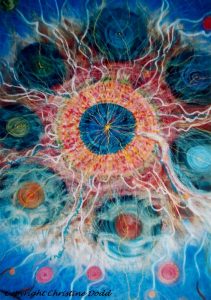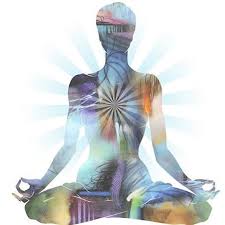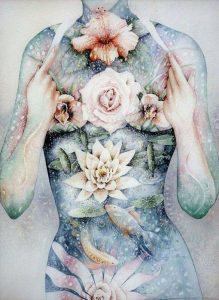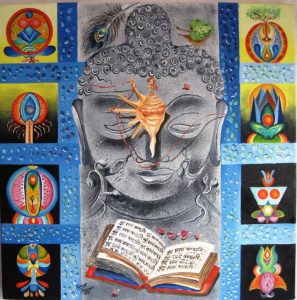 We use the breath as the foundation of meditation practice. One of the functions of the breath is to becalm the mind and to sense yourself: a living being . . . with six sense doors: sight, smell, hearing, taste, touch and in the Eastern contemplative tradition thought, a sense door that perceives what goes on in our minds. What does it mean to simply sense?
We use the breath as the foundation of meditation practice. One of the functions of the breath is to becalm the mind and to sense yourself: a living being . . . with six sense doors: sight, smell, hearing, taste, touch and in the Eastern contemplative tradition thought, a sense door that perceives what goes on in our minds. What does it mean to simply sense?
In meditation we let things simply appear through whatever sense door they appear in. We let them be there. Notice them when they’re there and when they go away, let them go. The emphasis is on being at ease. You’re not trying to accomplish anything; you’re not trying to force your meditation to become anything, just staying at ease and allowing things to occur naturally.
All kinds of sensory experience arise. There may be a sound outside. Let the sound come to you; you don’t have to go to it. An itch will occur; let the itch arise. You don’t have to do anything about it, just let it be there, be present for it. A thought arises, just be aware of the thought. You may experience restlessness . . . an eagerness to accomplish or fix something. You may try to block out what you are perceiving. The idea is to stay present. If sensation arises, be really present for it, take it in, allow it to be there, offer your presence to it. When it goes away, let it go away.
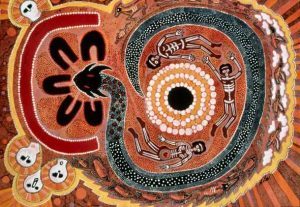 In the mindfulness tradition, this is called choiceless awareness. You don’t choose what arises, you don’t choose what you pay attention to, once you’re here and present you allow, choicelessly, whatever arises to be there. You’re not in conflict with anything. You’re not trying to manipulate anything or hold on to anything; just letting things be. In that radical letting-things-be, you let yourself be. Many people don’t have much experience with letting themselves just be. We’re always trying to fix or improve ourselves, to defend or protect ourselves. Let it be. Then the meditation practice unfolds and deepens with that sense of beingness.
In the mindfulness tradition, this is called choiceless awareness. You don’t choose what arises, you don’t choose what you pay attention to, once you’re here and present you allow, choicelessly, whatever arises to be there. You’re not in conflict with anything. You’re not trying to manipulate anything or hold on to anything; just letting things be. In that radical letting-things-be, you let yourself be. Many people don’t have much experience with letting themselves just be. We’re always trying to fix or improve ourselves, to defend or protect ourselves. Let it be. Then the meditation practice unfolds and deepens with that sense of beingness.
Over time, you may find life unfolds with less stress and more freedom. Insight arises when we start being present for our life in a careful way. We develop more concentration and stability in daily life with practice. Mindfulness in daily life is bout being easy, open and present to what arises without getting entangled. Rather than withdrawing we connect more fully to life. Our presence is like when we bring two hands together, relaxed palm to palm, simply making contact with living experience.
What is freedom? It is nothing more, and nothing less, than life lived awake.
~Ken McLeod, “Forget Happiness”
Continue reading →
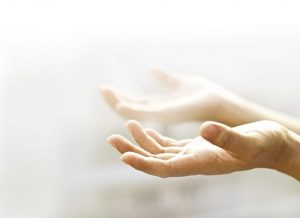 The Yogabliss on-line Moving into Meditation class met this morning. We explored how we meet the world during a time when it feels like the ground is crumbling beneath us. We reflected on how The Three Tenets of the Zen Peacemakers inform our practice and how they can help us respond to the world with more open mindedness and heartedness. The Peacemakers are a worldwide movement people who practice meditation, embody and do social action as a path of awakening and service. You can learn more about their fascinating story and work at Zen Peacemakers International.
The Yogabliss on-line Moving into Meditation class met this morning. We explored how we meet the world during a time when it feels like the ground is crumbling beneath us. We reflected on how The Three Tenets of the Zen Peacemakers inform our practice and how they can help us respond to the world with more open mindedness and heartedness. The Peacemakers are a worldwide movement people who practice meditation, embody and do social action as a path of awakening and service. You can learn more about their fascinating story and work at Zen Peacemakers International.





